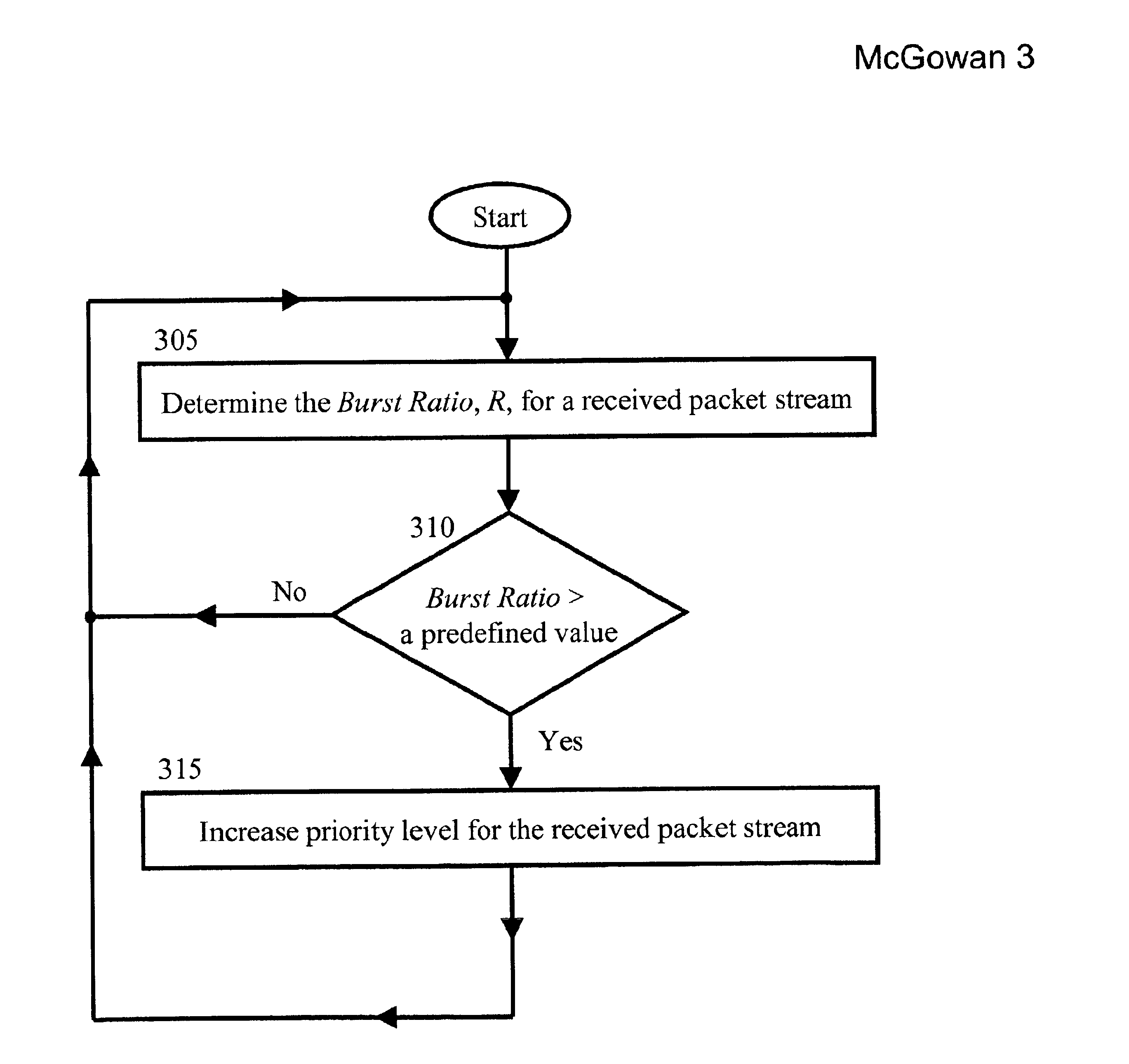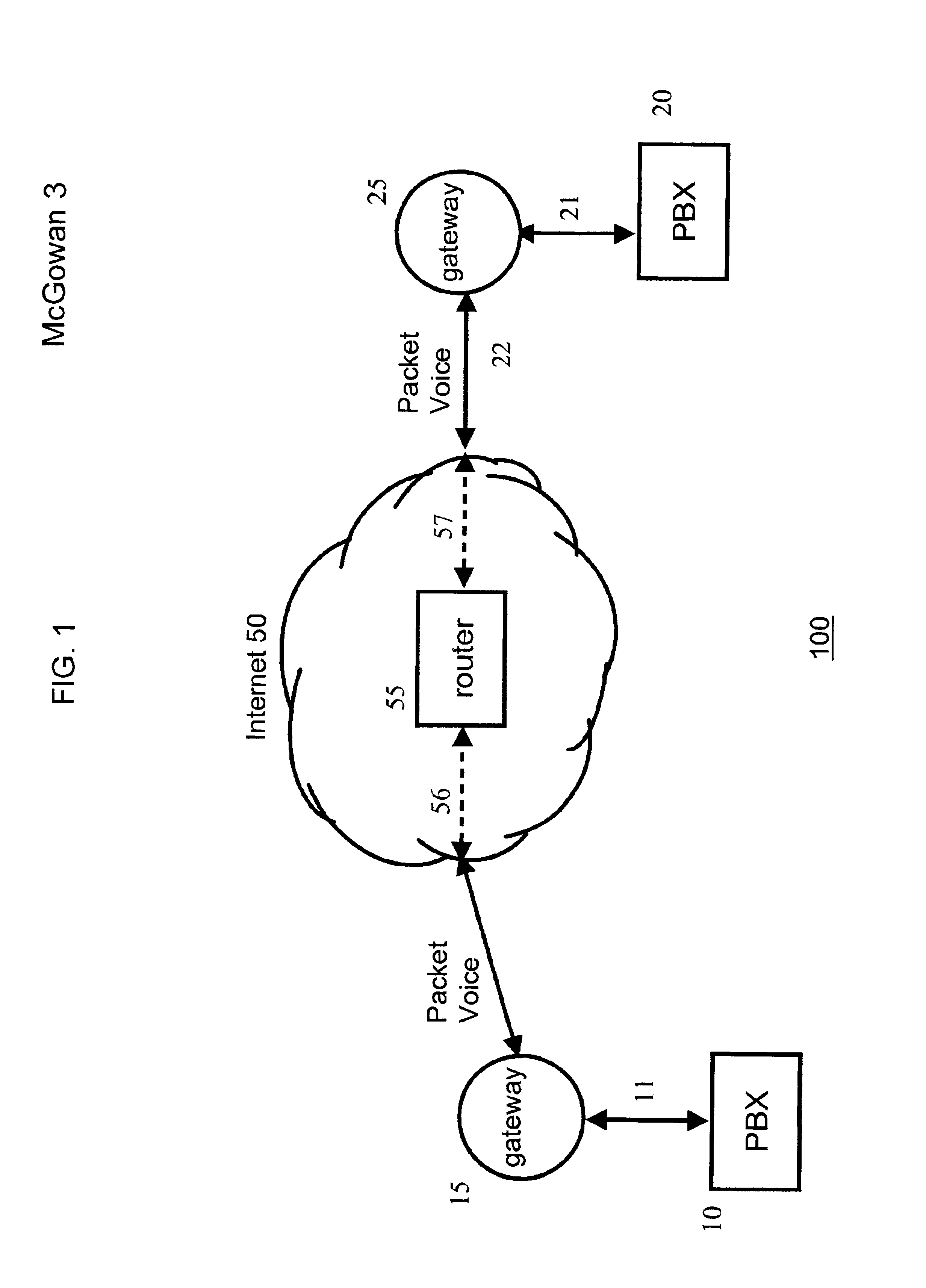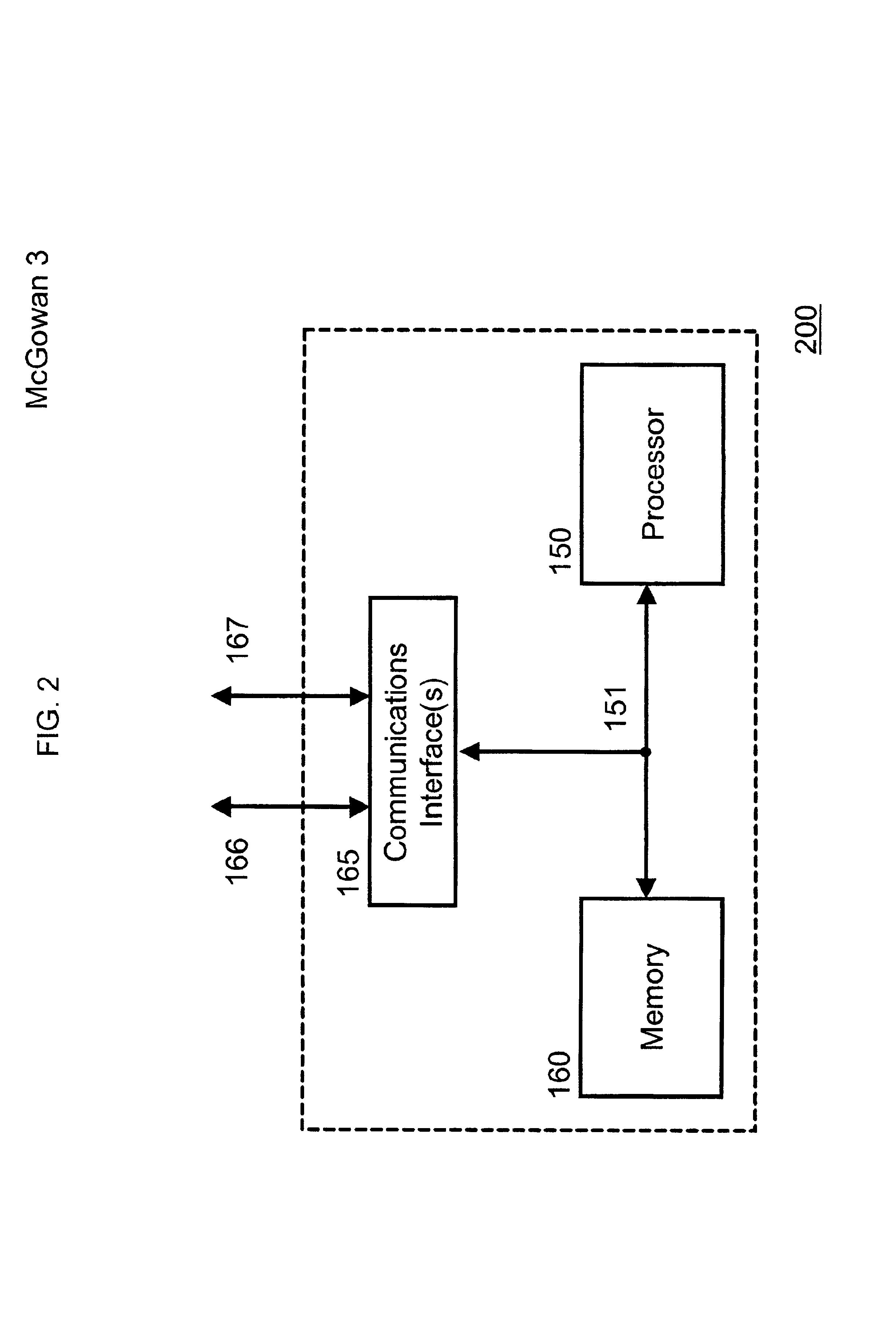Burst ratio: a measure of bursty loss on packet-based networks
a packet-based network and burst ratio technology, applied in the field of packet-based network burst ratio, can solve the problems of packet loss, packet loss, packet loss also occurring,
- Summary
- Abstract
- Description
- Claims
- Application Information
AI Technical Summary
Benefits of technology
Problems solved by technology
Method used
Image
Examples
Embodiment Construction
[0014]The following notation and definitions are presented for describing packet loss.
[0015]A signal is divided into packets by a sending application, and packets are reassembled by a receiving application. The terms “sending application” and “receiving application” are meant to be very general, and may describe the communication between the end-points of a communication link (e.g., between gateway 15 and gateway 25 of FIG. 1 (described further below)), either end-point and an intermediate device (e.g., between gateway 25 and router 55 of FIG. 1), or any two intermediate devices.
[0016]The term arrival status refers to the state of the packet at the time the packet must be played out by the receiving application. For the purposes of re-assembly, the arrival status of a packet can be either lost or found.
[0017]A packet is said to be lost if it fails to reach a receiving application within a pre-specified period of time for any reason. (This pre-specified period of time is a component ...
PUM
 Login to View More
Login to View More Abstract
Description
Claims
Application Information
 Login to View More
Login to View More - R&D
- Intellectual Property
- Life Sciences
- Materials
- Tech Scout
- Unparalleled Data Quality
- Higher Quality Content
- 60% Fewer Hallucinations
Browse by: Latest US Patents, China's latest patents, Technical Efficacy Thesaurus, Application Domain, Technology Topic, Popular Technical Reports.
© 2025 PatSnap. All rights reserved.Legal|Privacy policy|Modern Slavery Act Transparency Statement|Sitemap|About US| Contact US: help@patsnap.com



